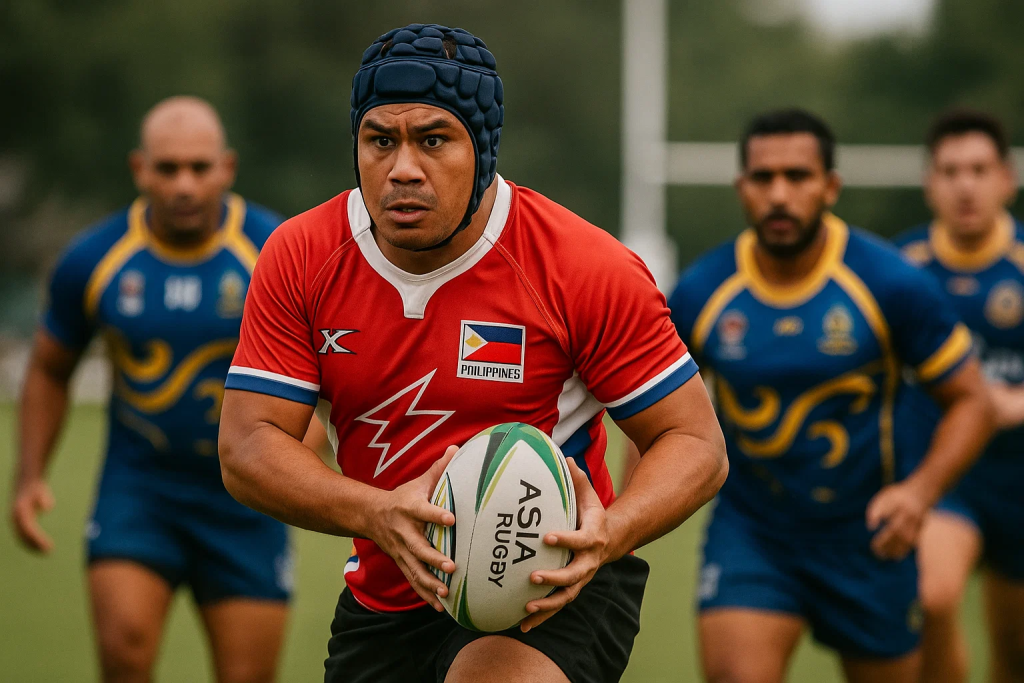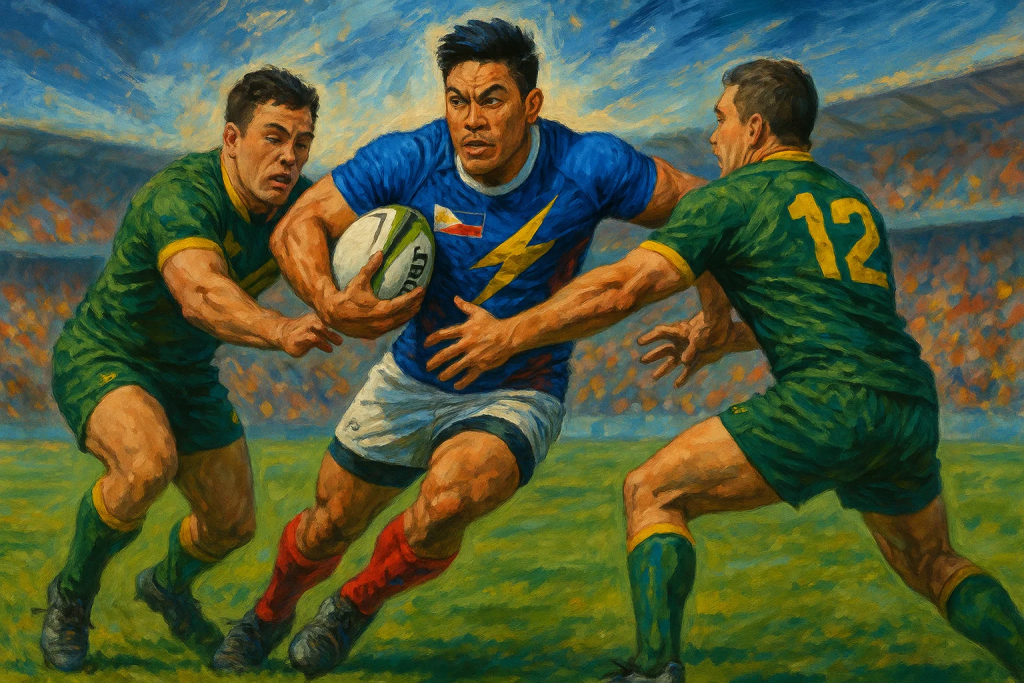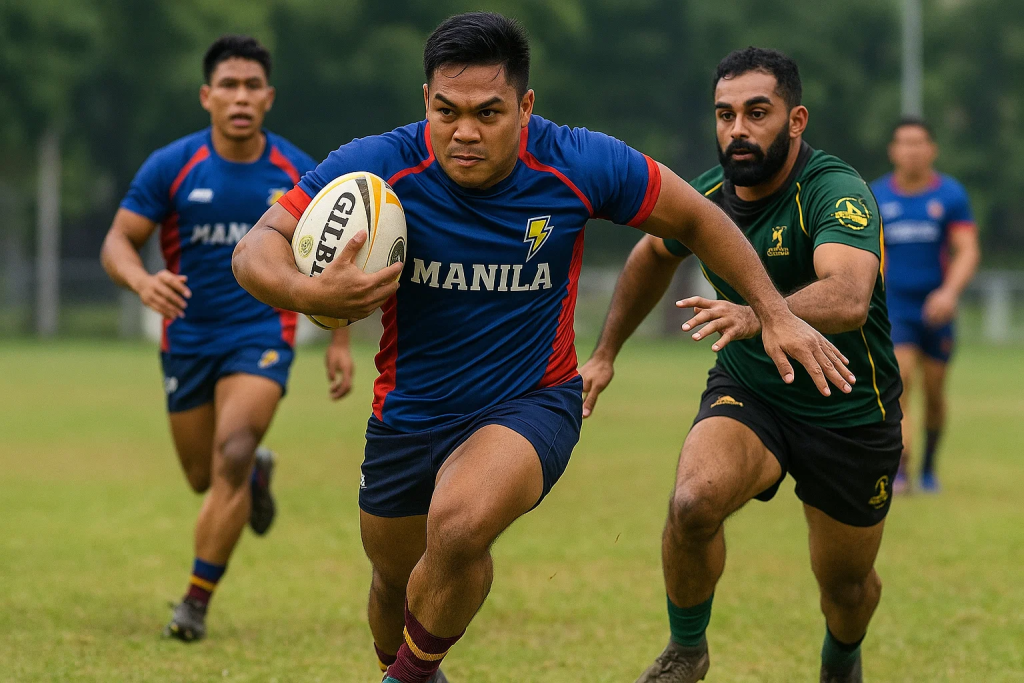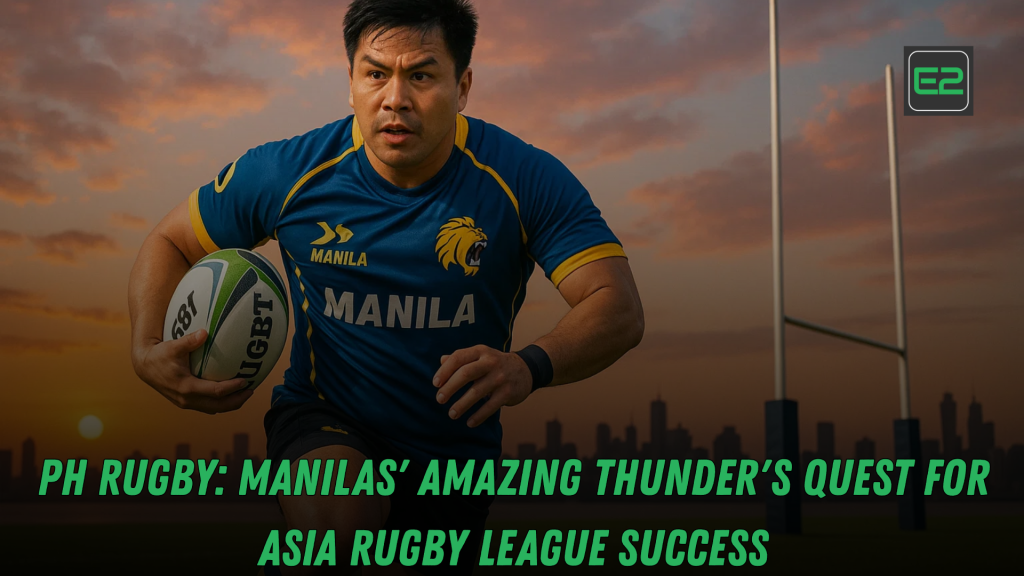Table of Contents
Executive Summary
The Manila Amazing Thunder are positioning themselves as the flagship of Philippine rugby league, blending local grassroots talent with the Filipino diaspora, pro-level coaching standards, and a data-driven competitive model. This playbook-style feature traces how the Thunder can climb the Asia rugby league ladder—from roster construction and tactics to fan engagement, sponsorship, and community impact—so the team can win matches while growing the sport sustainably in the Philippines.
Key takeaways:
- Build a dual-path roster that elevates domestic talents while integrating diaspora players with international experience.
- Lean on sports science, match analytics, and set-piece mastery to squeeze wins in high-variance, physical contests.
- Grow value off the field with school programs, women’s & youth pathways, and hyperlocal fan rituals that make the Thunder a Manila cultural staple.
- Execute a 12-month plan with quarterly KPIs across performance, commercial, and community pillars to create repeatable success.

Why Rugby League—and Why Now?
Rugby league’s core strengths suit the Philippine sports DNA:
- Explosive, watchable gameplay: Fast play-the-ball sequences, line breaks, and short-burst collisions fit highlight culture and social video.
- Clear positional identities: Forwards for go-forward and wrestle; halves for tempo; outside backs for finishing—easy for new fans to follow.
- Compact coaching footprint: With fewer set-piece complexities than rugby union, a league team can scale coherent systems fast.
As more Asian markets formalize competitions and cross-border events, a club like Manila Amazing Thunder can become the national standard-bearer, crafting a brand that resonates from Tondo to Talon Singko—and eventually to overseas Filipino communities. The competitive window is open for a well-prepared Filipino side to punch above its weight.
The Manila Amazing Rugby Thunder Identity
Think of the Thunder as a values-driven performance club built on three pillars:
- Filipino Grit, Global Standards
Honor local fighting spirit while training to international benchmarks in conditioning, technical drills, and match review. - Next-Gen Pathways
Youth and women’s rugby league pipelines—in schools, barangay courts, and university clubs—ensuring long-term sustainability. - Community First
Make home games a Manila festival: street food, drumlines, halftime skills challenges; turn casual spectators into repeat fans.
Strategy Pillar 1: Roster Construction of Rugby Team That Wins Today and Tomorrow
A. Dual-Path Recruitment
Domestic core (60–70%)
- Prioritize multi-sport athletes (basketball, track, wrestling) for conversion into league roles; test speed-power metrics (10m, 30m, COD, vertical).
- Scout university clubs and military/police athletic programs for raw power and discipline.
Diaspora impact (30–40%)
- Target Filipino-heritage players with semi-pro or pro exposure in Australia, New Zealand, the UK.
- Focus positions that drive immediate impact and leadership: halves, hooker, edge forward, fullback.
B. Profile by Position
- Props (8/10): Low error rate, dominant post-contact meters, clean wrestle mechanics, good quick-play-the-ball tempo.
- Hooker (9): Distribution speed, ruck IQ, deception at the line; 80-minute engine ideal.
- Halves (6/7): Kicking accuracy (end-over-end to corners), repeat sets, and composure on fifth-tackle options.
- Edge Forwards (11/12): Line running on lead lines/unders, tackle efficiency >90%, aerial contest on cross-kicks.
- Fullback (1): Support lines off every break, last-tackle reads, counter-attack instincts.
- Wingers/Centers (2–5): Yardage carries from exit sets; finish in tight corners; aerial take + quick play-the-ball.
C. Culture Fit
- Non-negotiables: On-time habits, humble learning mindset, anti-ego defense.
- Leadership group: Cross-section of local vets and diaspora leaders; rotating “Values Captain” to anchor behaviors weekly.
Strategy Pillar 2: Rugby Game Model & Tactical Identity
A. Philosophy
- Field Position → Pressure → Points
Win yardage early, force repeat sets, and capitalize on fatigue around the ruck. - Low-Error, High-Discipline Footy
In developing programs, error control wins more than flashy shapes. - Set-Piece Distinction
Craft two signature red-zone shapes and two short-side variations to punish defensive over-reads.
B. The Thunder Game Model (Four Phases)
1) Exit Sets (coming out of our end)
- First three carries by back-three + edge to center field; props pick up set 4; kick to corners; chase organized in two waves.
- KPI: Avg. start next set ≥ 35m from opponent’s line.
2) Midfield Arm-Wrestle
- Establish ruck speed via double-pump at A/B defenders; draw penalties with disciplined carry-to-ground and fast peel.
- KPI: 3.2+ seconds average ruck speed in our sets; penalty differential positive.
3) Good-Ball (red-zone)
- Base shape: Lead runner + out-the-back to halves → overs to center; variation adds inside ball to fullback.
- KPI: Conversion rate ≥ 35% in red-zone sets; error rate ≤ 8% in good-ball.
4) Goal-Line Defense
- Jam–slide rules defined per channel; early line speed on tackle 1–2; fold with urgency on 3–4; pre-call for fifth-tackle kick.
- KPI: Trys conceded/10 red-zone sets ≤ 1.8.
C. Fifth-Tackle Mastery
- Drill a decision tree: short side grubber, cross-kick to tall winger, or high bomb central + escort chase.
- KPI: Repeat sets ≥ 18%, errors on 5th ≤ 6%.
Strategy Pillar 3: Sports Science & Medical behind Rugby
- Testing Battery (Quarterly): 10m/30m sprints; 505 COD; isometric mid-thigh pull; Yo-Yo IR1; skinfolds.
- Workload Management: GPS for total distance, high-speed meters, accelerations; acute:chronic ratio to flag overload.
- Recovery Protocols: Cold immersion (10–12°C, 8–10 min), contrast showers for lower-resource days, mobility blocks, sleep hygiene (7.5–9 hrs).
- Injury Prevention: Nordics (hamstrings), Copenhagen planks (adductors), shoulder external rotation circuits, ankle stiffening hops.
- Heat Strategy (PH climate): Electrolytes pre- and in-session; shaded benches; misting fans on matchday.
Strategy Pillar 4: Analytics & Opposition Scouting
- Tag every game: ruck speed, tackle efficiency, missed tackles by channel, post-contact meters, error map, fifth-tackle options.
- Opposition dossier: preferred kick targets, red-zone shapes, penalties conceded under fatigue, right-edge or left-edge leak.
- Feedback loop: 25-minute review windows (max 15 clips) to keep focus and morale.
Training Architecture of Rugby: From Monday to Game Day
Mon (Recovery + Review): Mobility, pool recovery, 20–25 min analytics review in units (forwards/backs/halves).
Tue (Contact & Ruck Control): Tackle technique circuits, 4v4 wrestle pods, exit sets + kick chase.
Wed (Skills & Shapes): Spine cohesion (1–6–7–9), red-zone shapes at 80% speed, aerial drills.
Thu (High-Speed + Scenario): Game-speed blocks, fifth-tackle decision games, good-ball vs. goal-line defense.
Fri (Captain’s Run): Walk-through, special teams (short kickoff, goal-line dropout), rest and visualization.
Sat/Sun (Game): Clear roles, first-five-minutes focus rule: no early errors, no piggy-back penalties.
Home-Field Advantage: Make Manila Game Days Unmissable
- Pre-Match Barrio Fest: Food stalls, local bands, street art; turn arrivals into an event.
- Drumline + Chant Cards: Simple, family-friendly chants printed on cards; teach during warm-ups.
- Kids’ Mini-League: 10-minute 5-a-side curtain-raiser featuring local schools.
- Halftime Skills Challenge: Cross-kick catch for prizes, photo ops with players.
- Merch with Meaning: Jerseys inspired by Manila districts; a portion of proceeds funds grassroots clinics.
Commercial Engine: Sponsors, Partners, and Value
Category fits: telco (streaming data), hydration (electrolytes), apparel/footwear, logistics, e-wallets (ticketing), airlines/hotels (away travel), universities (interns).
Inventory menu:
- Front-of-shirt + training kit patches
- Stadium branding (goal-line pads, corner posts)
- Content series (mic’d-up, documentary short) presented by partner
- Grassroots clinics co-branded with CSR outcomes
- Data-driven reporting: attendance, reach, watchtime, redemption codes
Why partners stay: The Thunder tie brand exposure to community outcomes (youth participation, school clinics, female participation growth), not just impressions.

Community Impact: Build the Pipeline
- Schools Program (U12–U18): Safe-tackle technique, tag league to teach shapes without contact, coach upskilling clinics.
- Women’s Rugby League: A dedicated women’s side with equal access to S&C, medical, and match analysis.
- Coach Education: Level-based certifications, mentorship by diaspora pros, open practice days.
- Referee Pathway: Regular workshops, micro-grants for equipment and travel to fixtures.
- Barangay Touch League: Non-contact version for wide participation; converts to contact for interested seniors.
Communications & Brand Story of Rugby Teams
- Tone: Proud, welcoming, forward-looking; Filipino terms sprinkled naturally (e.g., “laban,” “bayanihan”).
- Visuals: Bold lightning motif, jeepney-inspired accents, textures of Manila streets.
- Content cadence: 3–4 Reels/week (drills, behind-the-scenes), 1 long-form/week (player story), 1 community post/week (clinic recap).
- Fan Club (Thunder Row): Early-bird tickets, meet-the-team nights, private livestream Q&As, limited-edition scarves.
SWOT: Where the Thunder Stand
Strengths
- Filipino athletic base and diaspora pipeline
- Clear tactical identity and low-error emphasis
- Community-first brand DNA
Weaknesses
- Relative inexperience at top regional levels
- Limited high-performance infrastructure early on
- Depth at specialist positions (hooker/halves)
Opportunities
- Growing Asian rugby league calendar
- Women’s and youth expansion
- Digital content monetization and e-commerce
Threats
- Injuries and travel costs
- Competing sports for eyeballs
- Scheduling volatility across borders
12-Month Roadmap (Quarterly Milestones & KPIs)
Quarter 1: Foundations
- Recruitment: Sign leadership spine (1–6–7–9), lock domestic core (≥ 65% local).
- Preseason: 8-week camp, GPS installed, injury-prevention baselines.
- Community: 12 school clinics; barangay touch league pilot in 3 districts.
- KPIs: 0.7 soft-tissue injury ratio/month; 500 clinic participants; social +50% followers.
Quarter 2: Launch & Learn
- Matches: 4–6 fixtures (mix friendlies/competition).
- Analytics: Ruck speed target met in 60% of sets; fifth-tackle error ≤ 8%.
- Commercial: 2 new sponsors; ticketing CRM live.
- KPIs: Avg. attendance 2,000; conversion rate 35% on red-zone; repeat-set rate 16–18%.
Quarter 3: Consolidation & Scale
- Matches: Push for top-four standing; integrate academy graduates in rotation.
- Women’s League: Minimum 4 fixtures; S&C parity achieved.
- Community: 4 more districts in touch league; coach education L1 cohort certified.
- KPIs: Missed tackles < 28 per game; tackle efficiency > 90%; 3,500 avg. attendance.
Quarter 4: Peak & Review
- Finals Push: Target semi-final berth; special teams polished.
- Content: 3-part mini-doc “Thunder Road to [Competition]”.
- Review: Athlete exit interviews; sponsor ROI deck; clinic impact report.
- KPIs: Net Promoter Score from fans ≥ 60; sponsor renewal ≥ 75%; academy intake +30%.
Playbook Within the Playbook: Five Match-Day Edges
- Short Kickoff Surprise: Once per half, high-hang to edge forward specialist with escort blockers trained to avoid penalties.
- Goal-Line Dropout Pressure: Deep dropouts to force opponents out of structure; chase discipline to trap in corner.
- Cross-Kick Package: Predetermined reads at 15m-out; winger timing cue off halfback’s second step.
- Bench Impact Window: Minutes 25–35 and 55–65—fresh prop pairing; three-set blitz aiming for penalties or repeat sets.
- Challenge Calls: Captain’s challenge (where rules permit) rehearsed with video analyst phrases; only used in 6-again/try scenarios with >70% confidence.
How the Rugby Thunder Win Fans for Life
- Ticket tiers: Family packs, student discounts, and “bring-a-barkada” bundles.
- Membership boxes: Include scarf, enamel pin, fixture magnet, and partner vouchers.
- Volunteer program: Ball kids, halftime runners, content interns (pipeline to full-time roles).
- Cause nights: Health, education, environment—donate a portion of gate to partner NGOs; invite beneficiaries on-field.
Measurable Outcomes That Matter
- On-field: Red-zone conversion, repeat-set rate, missed tackles, penalty differential, kick meters to corners.
- Commercial: ARPU per attendee, sponsor renewal %, e-commerce per cap, email list growth.
- Community: Clinic participants, schools onboarded, women’s participation %, coach/referee certifications.
- Brand: Social growth, video watch time, fan NPS, media sentiment.

Strong Call-to-Action
Are you ready to back a Filipino club that combines winning rugby league with community transformation?
Be part of the Thunder build:
- Join the Thunder Row membership to get early-bird tickets, behind-the-scenes content, and exclusive merch.
- Bring the Thunder to your school or barangay—request a free intro clinic with our coaches.
- Partner with Manila Amazing Thunder—from jersey patches to grassroots programs, we’ll craft a sponsorship that delivers results and impact.
Email: [email protected] | Follow: @ManilaAmazingThunder on FB/IG/TikTok
Hashtag: #BringTheThunder
Final Word
Manila Amazing Thunder is more than a team; it’s a statement that Filipinos can compete—and win—in a sport built on strategy, speed, and collective will. By combining disciplined play, sports science, and community passion, the Thunder can become Manila’s next great sports story—on the scoreboard, on the streets leading to the stadium, and in the hearts of fans.
#BringTheThunder—and let that roar echo across Asia.
Frequently Asked Questions (FAQ)
1) What level does Manila Amazing Thunder compete at, and who are the opponents?
The Thunder are targeting a regional schedule against Asia-based clubs and national development sides, mixing friendlies and official competitions. The plan is to build a stable fixture list (4–6 games in Q2, 6–8 games in Q3–Q4), then expand as facilities and finances allow.
2) How does the team balance homegrown talent and Filipino-heritage players?
Using a dual-path model: 60–70% local players (for long-term development) and 30–40% Filipino-heritage athletes with higher-level experience to lead tactics. The goal is to win now while building a sustainable foundation.
3) What should new viewers watch for to understand rugby league quickly?
Three cues: (1) Exit sets—the team that gets out of its own end cleaner gains early control; (2) In good-ball (attacking zone), watch how the halves direct play; (3) Fifth-tackle decisions are pivotal—smart kicks force repeat sets or opponent errors.
4) What does the Thunder do for the local community?
School clinics, a barangay touch league, and women’s/youth pathways with proper coaching, strength & conditioning, and basic medical support. Every home game is tied to a community theme (education, health, environment) to turn wins into social value.
5) How can I get involved or support the team?
Buy tickets/memberships and cheer in person.
Volunteer or intern (content, events, medical, media).
Sponsor the team: from in-kind (water, equipment) to commercial packages (jersey logo, content series). Email [email protected] for a tailored proposal.
Manila Amazing Thunder positions itself as the Philippines’ flagship rugby league club with a clear, two-track plan to win now and build sustainably. Competitively, the team targets a regional calendar against Asia-based clubs and national development sides—blending friendlies with official fixtures. The near-term roadmap aims for 4–6 games in Q2 and 6–8 in Q3–Q4, expanding as facilities, finances, and squad depth mature.
Roster strategy follows a dual-path model: 60–70% local players to nurture long-term Filipino talent, complemented by 30–40% Filipino-heritage athletes who bring higher-level experience to guide tactics and culture. This balance is designed to create immediate on-field impact while raising the ceiling of homegrown development.
For new fans, the Thunder simplify rugby league with three viewing cues: (1) Exit sets—who clears their own end cleaner usually controls territory; (2) Good-ball sequences—watch the halves orchestrate attacks near the try line; (3) Fifth-tackle decisions—smart kicks generate repeat sets or force mistakes, swinging momentum.
Community impact is baked into the club’s identity. Programs include school clinics, a barangay touch league to widen participation safely, and dedicated women’s and youth pathways offering coaching, strength & conditioning, and basic medical support. Each home game ties to a social theme—education, health, or environment—so victories translate into tangible community value.
Supporters can engage in three practical ways: buy tickets or memberships to build game-day energy; volunteer or intern across content, events, medical, and media; or sponsor the project via in-kind support (e.g., water, equipment) or commercial packages (e.g., jersey logos, branded content). Inquiries go to [email protected].
Ultimately, the Thunder present more than a team—they are a statement that Filipinos can compete and win through disciplined play, sports science, and bayanihan-driven culture. #BringTheThunder aims to echo across Asia, from the scoreboard to the streets and into the hearts of fans.
